Earlier this week, I explained why I thought the Cardinals’ offense would be better in 2022, even if the current roster remains in place, with no major additions before the start of the season.
Today I thought I’d do a quick follow-up by focusing on individual veteran hitters who should play the most. What can they do to improve?
YADIER MOLINA: Based on the metric (wRC+) for park-and-league adjusted runs created, Yadi’s overall offensive performance is15 percent below league average over the past three seasons. But he was slightly above average in 2018. There was more to it than randomness. Molina likes to pull the ball, and he hits for more power when he pulls. (As most hitters do. And it’s still true for him.) But the results have slipped during the past three years. The differences show up when Molina faces RH pitching. Over the past three seasons he’s batted .331 vs. RHP when hitting to center or right, and .276 when pulling. And overall he’s performed seven percent better vs. RHP when hitting to center or right instead of pulling. His slugging percentage is higher – but nothing dramatic – when he’s pulled the ball vs. RH over the past three seasons. Molina loses a lot of base hits by trying to pull.
PAUL GOLDSCHMIDT: Slow starts to the season have been an issue. In his three seasons as a Cardinal, Goldschmidt has been a league-average hitter (100 wRC+) in April and May. But during his time in St. Louis, Goldy has produced offense at a rate that’s 49 percent above league average from the start of June through the end of the regular season.
TOMMY EDMAN: The switch-hitting Edman is a lesser hitter when facing RH pitching during his MLB career. He has a .856 OPS vs. lefties, and a .700 OPS against righties. And there is a 142-point difference in his slugging vs. LH (.524) compared to RH (.382.) The main problem is the changeup. Righthanders throw a lot of ‘em to Edman; over the past two seasons he has a .206 average and .242 slugging percentage on changeups tossed by RHP. And RH have also held him to a .246 average and .355 slug on four-seam fastballs over the past two years. But the changeup gives him terrible problems.
PAUL DEJONG: He’s been frustrated by the Busch Stadium factors that make it hard on righthanded batters. And I think it’s in his head; last season DeJong was 29 percent below league average offensively when hitting at Busch, and the struggles included a glaringly low 14.4% line-drive rate. Too many fly balls. Too many grounders. And, evidently, no ready-made solutions. To put it simply: unless DeJong can find a way to fight Busch Stadium to a draw, and start winning some rounds, my optimism will remain at a low level.
Two other things: (1) He has a reverse platoon split and should NEVER be in the lineup against lefty pitchers, because his numbers against them are hideous – 26% below league average vs. LH since 2018. And (2) unless DeJong can start hitting sliders, his troubles will continue. Last season the slider was the second-most preferred pitch to throw to DeJong. No wonder. In 81 at-bats that ended on a slider, he batted .099 with a .259 slug.
EDMUNDO SOSA: He did so many things well, from his ability to make contact and keep his strikeout percentage low (19%), and his skill at hitting the ball to all fields. Now he must sustain that, and his fortunate batted ball luck (.326) was helpful last season. I bring that up for two reasons: (1) Sosa didn’t walk much (5.2%) and he had a very high ground-ball rate (52%) in 2021. Hitting so many ground balls makes any hitter vulnerable; if the grounders find gloves, the batting average and onbase percentage will plummet. Last season the MLB-wide batting average on ground balls was .236 – compared to a .686 average on line drives.
NOLAN ARENADO: Fly balls. Too many. Especially at Busch Stadium. I included this in a column written earlier this week, and I’ll present this in a different way. During his five peak seasons with the Rockies (2015-2019) Arenado had a 43.8 percent fly ball rate. When driving a fly ball during those seasons, he hit .290 with a .932 slugging percentage. But in his final season with Colorado, and his first season with St. Louis, Arenado’s fly-ball rate jumped to 49.3 percent. And when he hit a fly ball over the past two seasons, Arenado had a .194 average and .614 slug. When Arenado hit a line drive for the Cards in 2021, he batted .702 with a .957 slug. Simple statement: fewer fly balls, more line drives.
TYLER O’NEILL: O’Neill’s first real “full” MLB season was exciting, and he had the kind of season that made him the highest-rated left fielder (5.4 WAR) in the game. He batted .286, had a .352 OBP, a .560 slug, slammed 34 homers, produced a combined 169 runs scored and RBI, sprinted for 15 stolen bases, and performed 45 percent above league average offensively. But can T.O. improve as a hitter? Sure. His plate discipline tightened up considerably in 2021, but the big man can do even better by lowering his chase rate (32 %) on non-strikes, and salvaging more at-bats when pitchers get him into a two–strike count. Last season he struck out on 57.3 percent of his two strike counts; the MLB average was 42.8%. Even then, he hit 12 of his 34 homers on two-strike pitches – that’s impressive. And he had a slugging percentage (.341) well above the MLB rate (.279) in two-strike situations. So just imagine what O’Neill would do if he could lower his strikeout rate when a pitcher works him into a two-strike count.
HARRISON BADER: Last season Harry made significant progress in his matchups vs. RH pitchers, in his ability to hit offspeed and breaking pitches, and came through by lowering his strikeout rate to 21.2%. The next challenge? Consistency. Here’s how Bader hit during each month last season, minus June. (He missed the month while recovering from a busted rib.) I’ll use wRC+ and 100 is league average:
— April, 38
— May, 81
— July, 173
— Aug, 21
— Sept-Oct, 163
The fluctuations were extreme. He still ended up with a .469 slugging percentage, a .785 OPS, and a homer every 22.9 at–bats. If he can avoid those awful months, his numbers will rise even more.
DYLAN CARLSON: The young switch-hitter has to win more battles against righthanded pitching. As a rookie last season Carlson performed 50 percent above league average offensively vs. lefties, and three percent above average vs. rights. There was nearly a 100-point difference in his batting average against LH (.341) and RH (.243) and a 117-point gap in slugging percentage. But Carlson got better against righthanders late in the season and posted a slash line of .273/.341/.430 over the final two months. There will be more of that in 2022. That said, most of Carlson’s power vs. RH pitchers surfaced when they tried to pound four-seam fastballs and sinkers. He was ineffective against sliders and curves from RH pitching, batting .196 with a .239 slug against their sliders and .173 with a .346 against their curves. But he’s an intelligent hitter, and I’m confident we’ll see him do more with those pitches in ’22.
LARS NOOTBAAR: In his first test in the majors, this lefthanded hitter had only 124 plate appearances overall, so there isn’t much to go on. But I noticed that he had a reverse platoon split going, hitting much better against lefties (.865 OPS) than RHP (.707 OPS.) He’s an impressive looking hitter, and plenty smart. He made adjustments when the Cardinals brought him up from Triple A Memphis for the second time last season, posting a .347 OBP and .476 slug in his final 96 plate appearances. Definitely an intriguing talent.
I hope you learned a few interesting things by reading this …
And I thank you for reading it.
–Bernie
Bernie invites you to listen to his opinionated sports-talk show on 590-AM The Fan, KFNS. It airs Monday through Thursday from 3-6 p.m. and Friday from 4-6 p.m. You can listen by streaming online or by downloading the “Bernie Show” podcast at 590thefan.com — the 590 app works great and is available in your preferred app store.
Follow Bernie on Twitter @miklasz
All stats used in this column were sourced from valuable research sites: FanGraphs, Baseball Reference, Stathead, Bill James Online, Baseball Savant and Brooks Baseball Net unless otherwise noted.
For the last 36 years Bernie Miklasz has entertained, enlightened, and connected with generations of St. Louis sports fans.
While best known for his voice as the lead sports columnist at the Post-Dispatch for 26 years, Bernie has also written for The Athletic, Dallas Morning News and Baltimore News American. A 2023 inductee into the Missouri Sports Hall of Fame, Bernie has hosted radio shows in St. Louis, Dallas, Baltimore and Washington D.C.
Bernie, his wife Kirsten and their cats reside in the Skinker-DeBaliviere neighborhood of St. Louis.



